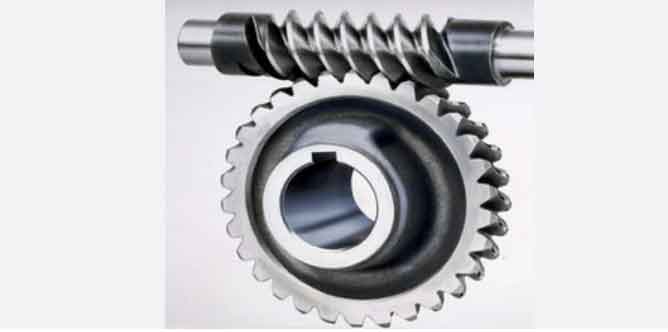
Worm gear design and manufacturing come with specific challenges that need to be addressed to ensure optimal performance and reliability. Some common challenges and their solutions include:
1. Backlash and Clearance:
Challenge: Backlash and clearance between the worm and worm gear teeth can lead to reduced precision and accuracy in motion control applications.
Solution: Properly design the worm gear system to minimize backlash and clearance. Use high-quality materials, precision machining, and suitable preloading techniques to reduce these issues.
2. Efficiency and Heat Generation:
Challenge: Worm gears tend to have lower efficiency compared to other gear types due to sliding friction, which can also lead to heat generation.
Solution: Select the right lubricant with good film-forming properties and proper viscosity to minimize friction and heat. Implement cooling systems if required to dissipate excess heat during operation.
3. Load Capacity and Strength:
Challenge: Worm gears may experience high contact stress and wear, especially when transmitting heavy loads.
Solution: Use materials with high strength and wear resistance for the worm and worm gear. Proper heat treatment and surface hardening can further enhance the load-carrying capacity and durability.
4. Lubrication and Contamination:
Challenge: Inadequate lubrication or contamination can lead to increased friction, wear, and reduced efficiency.
Solution: Implement a robust lubrication system with regular maintenance to ensure a sufficient supply of clean lubricant to the gear system. Use effective seals and guards to prevent contamination from entering the gear system.
5. Tooth Profile Design:
Challenge: Designing the correct tooth profile for both the worm and the worm gear is crucial to achieve smooth and efficient gear meshing.
Solution: Employ advanced design tools and simulations to optimize the tooth profile and meshing characteristics. Ensure proper gear geometry and contact patterns for efficient power transmission.
6. Axial Thrust and Support:
Challenge: Worm gears generate significant axial thrust during operation, which requires proper support and axial load management.
Solution: Design the worm gear system with adequate thrust bearings and support arrangements to handle the axial loads. This prevents excessive wear and extends the gear system’s lifespan.
7. Manufacturing Precision:
Challenge: The manufacturing process for worm gears requires high precision to achieve smooth gear meshing and low backlash.
Solution: Use advanced machining techniques and quality control measures during the manufacturing process to ensure precise gear tooth profiles and tight tolerances.
8. Self-Locking Behavior:
Challenge: The self-locking nature of worm gears can be advantageous in certain applications but may pose challenges in others.
Solution: Consider the specific application requirements when deciding whether the self-locking feature is beneficial or if additional measures are needed to prevent unintended self-locking.
By addressing these challenges during the design and manufacturing stages, engineers can create high-quality worm gear systems that offer excellent performance, efficiency, and reliability in a wide range of applications. Collaborating with experienced gear manufacturers and employing advanced design and simulation tools can further aid in overcoming these challenges and optimizing worm gear system performance.
